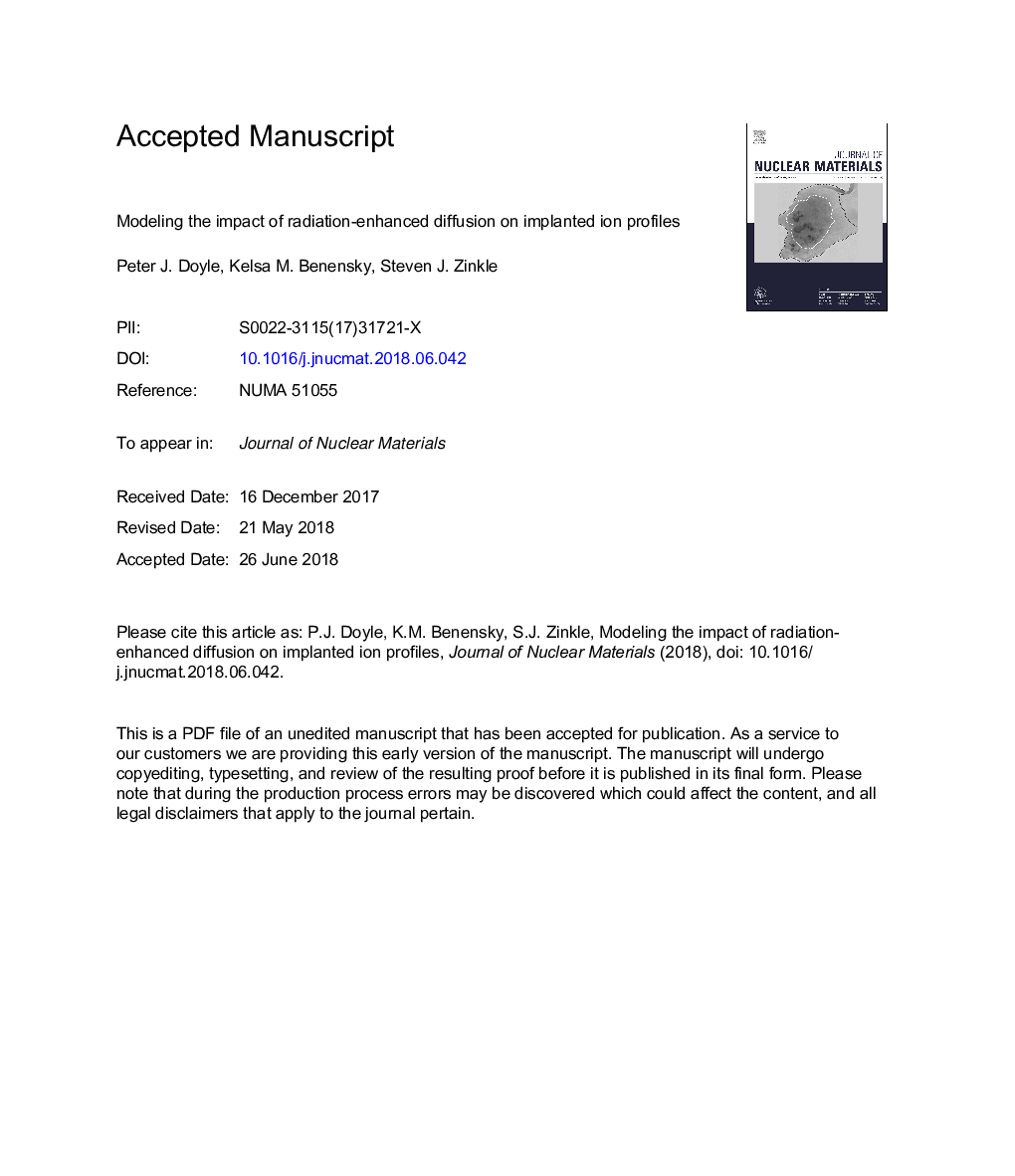| Article ID | Journal | Published Year | Pages | File Type |
|---|---|---|---|---|
| 7963049 | Journal of Nuclear Materials | 2018 | 33 Pages |
Abstract
Ion irradiations are a valuable research tool for exploring radiation effects in materials. However, it is well recognized that the implanted ions can artificially modify the radiation damage evolution, e.g., enhancing amorphization processes at low irradiation temperatures and suppressing void swelling at elevated temperatures. Therefore, the implanted ion region should be avoided for most studies of ion irradiated materials. Due to increased interest in high damage, high temperature ion irradiations studying radiation effects in materials for proposed high dose Generation IV fission and fusion energy applications, it is crucial to quantify the extent of diffusional broadening of the implanted ion profile for a variety of temperatures, irradiation fluxes, and sink strengths. The present study summarizes computational analyses of thermal and depth-dependent radiation enhanced diffusion (RED) on diffusion broadening of the implanted ion profiles in Fe and Ni for a variety of irradiation conditions. For a low assumed RED coefficient (10â20-10â19â¯m2/s and 10â4 and 10â3 peak dpa/s, respectively) or high flux, broadening of the as-implanted ion profile is very small and a suitable artifact-free midrange region for analysis exists for ion energies above 5-6â¯MeVâ¯at 100 peak dpa. At high RED coefficients (10â19-10â18â¯m2/s and 10â4 and 10â3 peak dpa/s, respectively) broadening is much more significant, and no valid region for investigation exists below 6-8â¯MeV ion energies at any damage level >50 dpa. While increasing flux decreases irradiation time, it also increases the RED coefficient; these effects mostly offset except under recombination-dominant conditions. For typical high dose irradiation studies of void swelling that exceed â¼100 displacement per atom (dpa), ion energiesâ¯>6-8â¯MeV must be employed in order to achieve suitable artifact-free midrange irradiation analysis regions, depending on the material system. Analysis of amorphization/precipitation require even higher energies (>10â¯MeV).
Related Topics
Physical Sciences and Engineering
Energy
Nuclear Energy and Engineering
Authors
Peter J. Doyle, Kelsa M. Benensky, Steven J. Zinkle,
